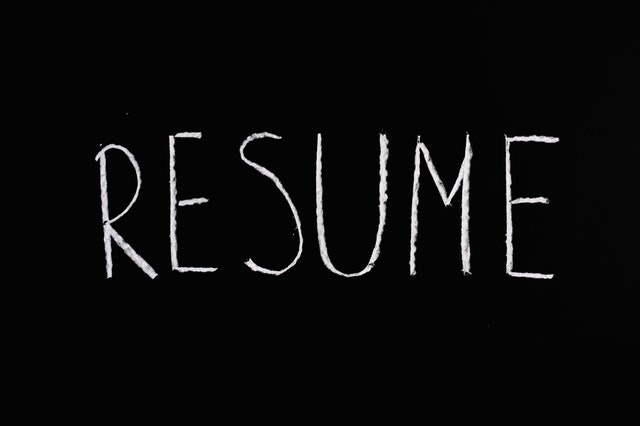Writing a flamboyant resume is your first step-towards the paycheck. And, honestly a crucial one! It’s your first impression of the recruiter. And you know, what they say about the first impression? The first impression is the last impression. Namely, your resume has to be just perfect. Moving along, does resume writing intimidates you?
Yes? No? Maybe?
It won’t anymore! As here, you are going to learn how to build the resume precisely to catch the attention of the recruiters.

Do you know?
As per researches, 8 out of 10 resumes are discarded with only a 10 second glance by an HR person or occasionally by a manager.
Being present on this page verifies that you don’t want to be stood up in that “no” pile zone so soon. Right?
Resume writing may be an overhauling process. But with the right technique, you can create it right in wee time.
Thus, in this article, we will expand our knowledge about resume writing, the difference between a resume and a Curriculum vitae (CV), the framework and formatting of a resume. In a nutshell, it’s the complete guide that will facilitate you to construct an impressionable or formidable resume.
Read now!
WHAT IS RESUME WRITING?
Nothing new- resume writing simply means writing a resume. Then what in the world is a resume? On which our whole career depends? That opens up an array of doors.
Resume refers to the sum total record of your work experiences, skills, education (along with obviously your contact information.) Leftover space can be embellished with achievements and affiliations.
This brings us to the next important question. What’s that?
CONTRAST BETWEEN A RESUME AND A CURRICULUM VITAE
You may have heard people (including yourself) using the words interchangeably. But no- they are not the same! Unakin to the aforementioned definition of resume, a CV is a broader and more expansive document that includes the whole history of your education, career, experiences, skills.
Advertently, while a resume sums up in 1-2 pages, a CV can go beyond 3-4 pages. So, now you know where the difference lies. CV is more detailed and covers a whole lot of your background, whereas a resume is a succinct substance.
So, from now on don’t be confused with both these terms.
HOW TO FRAME A RESUME?
Here, we are on the thoroughly rhetorical and bespoke question. Let’s check out what all things are to be included in the resume and how?
CONTACT INFO

Starting from the top, your resume should include the following information in the header part of your resume:
- Name
- Phone no.
- Address
- Social media or LinkedIn URL (optional)
Incorporate all of this much valuable information in the crown area. After all, you don’t want a recruiter struggling to make-a-contact with you.
PROFESSIONAL SUMMARY
Professional summary succinctly summarizes who you are, what you do, and why you are a fit for the job in not more than three lines. Limited space calls for a brief, clear-sighted yet alluring explanation of yourself. So, be scrupulous with your thoughts and words. And yes, use active voice.
By contrast, an objective statement stating your goals and objectives has now become a cliché and outdated. That is to say, refrain yourself from putting that and overstuffing your resume.
SKILLS
Over the years, this section has gained prominence in the eyes of employers. Nowadays, recruiters are predominantly probing and scrutinizing resume rife with performing skillset. To enlist them, you can simply list them or formulate bullet points.
As a part of aid, you can go through the job description of your dream job or your industry-specific job to get a good detail of sought-after skills. Also, avoid overstuffing the skillset section. Give preference to substantial skills.
WORK EXPERIENCE
Evidently, this is one of the most crucial parts of your resume. So, be assiduous as to what to lay on the table and how. Your entire work experience has to be consistent as well as compelling side by side.
What all you have to include a particular work experience?
- Company name
- location
- employment details
- Designation( roles and titles)
The bespoke work expertise has to be your stand out feature. Recruiters scrutinize and determine these experiences to consider your potential. If your background caters to the need of the job, you are assuredly up for the interview!
EDUCATION
Your roots are manifested in your academia and educational know-how. So, do not forget to mention the credible credentials of your academic and vocational training.
Also, be certain not to dig unfathomable depths with your academics. As a thumb rule, which degree/school, year, and from where would suffice the recruiter’s inquisitions.
Knowing what to write is not enough to cast an impression on the recruiter. You have to be profound with the formatting that appeals to the eyes of the recruiter. How?
FORMATTING OF THE RESUME
Any recruiter gets muffled with numerous applications from applicants like you. As mentioned earlier, they hardly take 10 seconds for a quick go-through.
Now, if your resume is filled with information and data- that’s of no use! Because honestly, the recruiter won’t even bother to see it. Reading that would be the last resort.
Then, how to get their eyes stuck on your resume? Here’s how.
1. Use a standard font with 11-12 pt.
2. Divide each section so that there is ample white space between them.
3.Though white would be subtle, you can add some hues but make sure they are light and pleasant to the eyes.
4.No fancy embellishments are required.
5.Try to squeeze it into one or a maximum of two pages.
6.If you are going to have a print copy, prefer to use a good quality paper.
Now the ball is in your court. Craft your own resume and conquer your goals and dream job. All the very best.
This brings the end of this Blog. Thanks for reading. We really appreciate your time.
Do visit our page www.zigya.com/blog for more interesting articles
We would love to hear from you. Please share your feedback and comments below.
Keep Reading! Cheers!
Zigya Academy
BEING RELEVANT